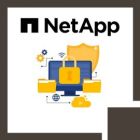
Make Your Cloud Integration Easier and Increase the Quality of Integration through NetApp Training
Integrating on-premises infrastructures with the cloud is the logical next step for just about any organization currently functioning on purely legacy systems. Cloud technology is now the mainstream, and augmenting existing data centers with cloud solutions, as well as replacing the existing applications and data storage is the way to go. Incidentally, in almost every modern environment, data is bound to be gathered from several sources that are located in a number of locations, such as private cloud, on-premise or public cloud.
Both on the surface and in-depth, cloud integration, as a process, is sufficiently mapped. There is a large number of tools and services designed to assist with integration, while also improving the quality of integration and making sure that organizations don’t run into any of the common pitfalls along the way. In addition to this, enterprises need to make a number of critical decisions regarding the data they already possess.
This is where NetApp comes in, as an ideal storage management platform for the hybrid cloud environment, a medium that is ideal for the company that has only recently begun the cloud transformation internally. To that end, in this article, we will be discussing how hybrid cloud integration can be implemented, and how its quality can be increased, by virtue of NetApp training.
Note: Since not all enterprises and organizations are similar in size, scope and IT maturity, as well as regarding the level of cloud adoption they desire, integration cannot be a one-size-fits-all solution. However, the necessary steps for high-quality integration are virtually universal.
The Ideal Cloud Deployment Model for Data and Apps
Deploying the applications and data requires a complete, well-thought out plan in the form of a deployment model. Currently, there are 4 distinct options for deployment – as follows:
- On-premises deployment
- Deployment to a hosted private cloud
- Deployment to a public cloud
- A combination of all three deployment options (hybrid cloud)
Since NetApp offers a hybrid cloud solution, it naturally comes equipped with a roadmap for deployment. Training teams on NetApp cloud integration fundamentals teaches the members responsible for cloud transformation to take into account criteria such as security, flexibility, automation, pace, overall cost, levels of service, as well as system interdependencies.
Integration with Current Enterprise Systems
With the onset of hybrid cloud computing strategies comes the prospect of integrating existing systems with newer cloud-based services. With each deployment of a cloud service, existing on-premises systems related to said service will need to be integrated. To address the integration prospect, enterprises need to:
- Install controlled interfaces for easier data and/or application access by cloud service components, through the use of API management and related technologies.
- Take into account business and administration aspects of cloud integration, along with functional systems integration.
- Demand cloud service interface support from the cloud service providers.
Address the Requirements for Connectivity
Hybrid cloud computing is more than just communication between components which are running in separate environments. The service levels also need to be met by the connectivity. Additionally, security policies need to be adhered, along with enablement of the IT management strategy.
Customers of hybrid cloud need to evaluate their unique requirements for connectivity. This can be done by considering the individual requirements of links which exist between components spanning several on-premises systems and cloud services. This ensures that there is sufficient connectivity in place to support requirements.
If network virtualization is available, its usage should be considered as well.
Develop Service Agreements and Governance Policies
With several cloud services connected in a single hybrid setup requires a governance framework that is maintained by the customers; considering the numerous cloud service agreements between the service providers and customers. This needs due diligence on the part of enterprise customers.
NetApp training has governance and service agreements monitoring as a central feature, focusing on assessing existing governance and compliance frameworks, identifying gaps and harmonizing processes along. Additionally, since cloud integration is often a change on the organizational level, people need to be educated and habits need to form, regarding compliance.
Cloud Environment Management
Most cloud service providers don’t provide their own management tools, which requires customized tools for public cloud services. NetApp has OnCommand Cloud Manager, which centralizes cloud storage environment management.
On the storage management and replication front, NetApp can prove invaluable, since the entirety of the data is secured and can be managed from a single point. This expertise can be instilled in teams responsible for cloud integration by delivering NetApp training right before the integration process begins.


